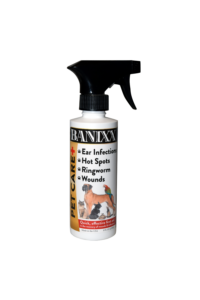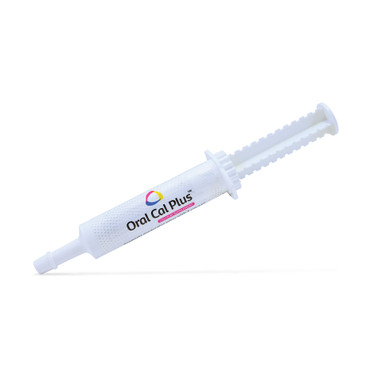Yikes! Is this Scale Rot on my pet Python? How do I treat Ball Python Scale Rot?
Estimated 0 min read

Is it scale rot?
Picture this: you’re doing your daily check on your beloved reptile when you notice something off about their scales.
Maybe they look a bit discolored, or perhaps they’re not quite as smooth as usual. Your heart skips a beat – as any reptile owner knows, changes in their pet’s appearance can signal underlying health issues.
Understanding these changes, particularly when it comes to scale health, is crucial for their survival. While reptiles may seem tough with their scaly exterior, they require specific care to prevent common but serious conditions that can affect their scales.
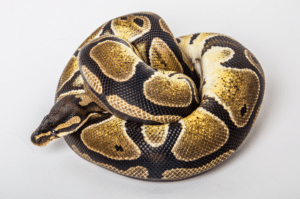
Ball Python
What is scale rot?
Scale rot is one of the most common yet potentially serious health conditions that can affect reptilian pets. This complex condition serves as a catch-all term describing various forms of dermatitis or skin inflammation that develop in reptiles. The term encompasses several specific conditions, including blister disease, vesicular dermatitis, bacterial infections, and secondary infections resulting from burns or abrasions. These infections typically begin when bacteria or fungi penetrate a reptile’s protective scale layer, leading to progressive skin damage.
In its early stages, small blisters form beneath the scales, initially containing clear, sterile fluid. These seemingly harmless blisters can rapidly become a breeding ground for harmful bacteria, transforming the clear fluid into cream-colored pus. The infection process often starts when excessive moisture in the reptile’s environment creates ideal conditions for bacterial and fungal growth. These microorganisms can proliferate in damp substrate, particularly when combined with organic matter from waste or uneaten food.
The biological impact of scale rot extends beyond surface-level damage to the reptile’s scales. When left untreated, the bacteria can breach the protective barrier of the skin and enter the bloodstream. This progression can lead to septicemia, a potentially fatal condition where bacteria spread throughout the body. The infection process is particularly concerning for snakes, as their entire ventral surface often contacts potentially contaminated substrate. Similarly, lizards commonly experience tail rot, a specific manifestation of scale rot that can severely impact their health.
The relationship between environmental conditions and scale rot highlights the delicate balance required in reptile care. Unlike mammals, reptiles cannot internally regulate their body temperature and instead rely on their environment for thermoregulation. When captive environments fail to provide proper temperature gradients or maintain appropriate humidity levels, reptiles become more susceptible to scale rot. The constant exposure to improper conditions, combined with limited opportunities to naturally regulate their body temperature and humidity exposure, creates an environment where scale rot can thrive.
Symptoms of Scale Rot
A reptile’s external appearance offers vital clues about their overall health status and potential scale rot development. The progression of scale rot follows a predictable pattern, with early detection being crucial for successful treatment outcomes. Understanding these warning signs enables reptile owners to intervene before the condition advances to a more severe stage that requires extensive veterinary care. The systematic nature of scale rot’s progression means that careful daily observation can reveal subtle changes before they become serious health threats.
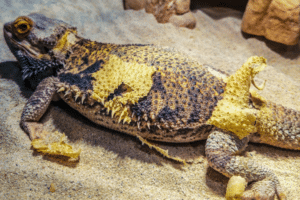
Check for discoloration
Physical Symptoms of Scale Rot
Discoloration of Scales
Abnormal darkening of scales, particularly along the ventral surface or tail area, often signals the earliest stage of scale rot development.
Raised or Swollen Scales
Blood pooling beneath affected areas causes scales to lift away from the body, creating an irregular texture across the reptile’s surface.
Blisters and Fluid Formation
Clear fluid-filled blisters emerge beneath the scales, potentially developing into infected pustules containing yellow or blood-tinged material.
Crusty or Damaged Surfaces
The affected scales may become cracked, crusty, or completely detach from the underlying tissue as the infection progresses.
Foul Odor
Infected areas often produce a distinct unpleasant smell due to the presence of bacteria and dying tissue beneath the scales.
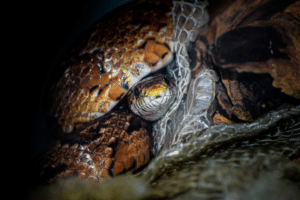
Is your reptile acting different?
Behavioral Changes from Scale Rot
Decreased Appetite
Reptiles experiencing scale rot may show reduced interest in food as their bodies direct energy toward fighting the infection.
Movement Alterations
The pain and discomfort associated with scale rot can cause reptiles to move differently or avoid certain positions and surfaces.
Increased Aggression
Previously docile reptiles might display defensive behaviors during handling due to the pain associated with infected areas.
Causes of Scale Rot in Reptiles
Scale rot emerges from a complex array of environmental conditions and health factors that compromise a reptile’s natural defenses. The relationship between these factors often creates a cascade effect, where one issue compounds another to create ideal conditions for bacterial and fungal growth.
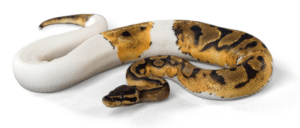
Keep their environment CLEAN!
Environmental Triggers that can Cause Scale Rot
Unsanitary Living Conditions
The accumulation of waste products, uneaten food, and shed skin creates an ideal breeding ground for harmful bacteria and fungi. These organic materials break down in the enclosed space of a terrarium, releasing moisture and nutrients that support microbial growth. The bacteria then colonize any damaged scales or small wounds, initiating the infection process that leads to scale rot.
Improper Humidity Regulation
Excessive moisture in the environment prevents natural drying of the substrate and creates constant dampness against the reptile’s scales. This persistent moisture weakens the protective barrier of the scales, making them more susceptible to bacterial invasion. When combined with organic matter from waste or food, high humidity levels accelerate bacterial reproduction rates.
Temperature Imbalance
Insufficient heating prevents proper drying of the substrate and compromises the reptile’s immune system function. Cold temperatures slow down a reptile’s metabolism and reduce their ability to fight off infections. The combination of cool temperatures and moisture creates perfect conditions for fungal growth, particularly in areas where the reptile’s body contacts the substrate.
Poor Air Circulation
Inadequate ventilation leads to stagnant air and moisture accumulation within the enclosure. Without proper air exchange, humidity levels remain consistently high, and airborne bacteria and fungal spores concentrate in the environment. This creates a perpetual cycle where moisture-loving microorganisms thrive and continuously challenge the reptile’s skin defenses.
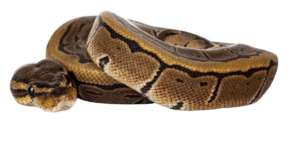
Does your reptile look healthy?
Health Factors that Lead to Scale Rot
Nutritional Deficiencies
Insufficient vitamins A and C weaken the reptile’s immune system and compromise their skin’s natural barrier function. These vital nutrients play crucial roles in maintaining healthy skin cell production and immune system responses. When lacking these nutrients, reptiles become more susceptible to bacterial invasions through their scales.
Physical Damage
Scratches, cuts, and abrasions from rough surfaces or substrate create entry points for bacteria to penetrate beneath the scales. These wounds, however minor, break through the protective barrier of the scales and expose vulnerable tissue to environmental pathogens. Even small injuries can develop into significant infections when exposed to contaminated substrate.
Systemic Health Issues
Underlying health conditions can suppress the immune system and make reptiles more vulnerable to scale rot development. Stress from improper housing conditions or handling can further compromise their immune response. This decreased immunity allows opportunistic bacteria to establish infections more easily in damaged or weakened scales.
Shedding Complications
Incomplete or difficult sheds leave old skin attached, creating spaces where moisture and bacteria can accumulate. The trapped moisture softens new scales underneath, making them more susceptible to bacterial invasion. The stress of problematic shedding further weakens the reptile’s natural defenses against infection.
How to Prevent Scale Rot
The prevention of scale rot requires a scientific understanding of environmental management and proper husbandry techniques. Maintaining optimal conditions within a reptile’s enclosure creates an environment where harmful bacteria and fungi struggle to establish themselves. The systematic approach to prevention addresses both immediate environmental factors and long-term habitat maintenance requirements.

Treating scale rot withBanixx
Habitat Management for Preventing Scale Rot
Daily Cleaning Protocol
A thorough daily cleaning routine removes organic matter before it can decompose and create bacterial breeding grounds in the enclosure. The immediate removal of waste products, shed skin, and uneaten food prevents the accumulation of moisture-retaining materials. This proactive approach significantly reduces the bacterial load within the habitat and minimizes the risk of scale infections.
Substrate Maintenance
Regular substrate monitoring and replacement ensures proper moisture levels and prevents the development of bacterial colonies in bedding materials. The choice and maintenance of appropriate substrate directly impacts the moisture levels in contact with a reptile’s scales. Fresh, dry substrate provides a clean surface that allows proper airflow and prevents prolonged contact with dampness.
Temperature Regulation
Maintaining species-appropriate temperature gradients enables natural thermoregulation and promotes proper immune system function in reptiles. The provision of adequate basking spots and cooler regions allows reptiles to regulate their body temperature effectively. Proper temperature management also ensures that any moisture in the enclosure evaporates appropriately, preventing the persistent dampness that encourages bacterial growth.
Humidity Control
Careful monitoring and adjustment of humidity levels prevents the formation of condensation and excessive moisture in the enclosure. Species-specific humidity requirements must be balanced with adequate ventilation to prevent water accumulation on surfaces. The proper management of moisture levels helps maintain the natural protective barriers of reptilian scales.
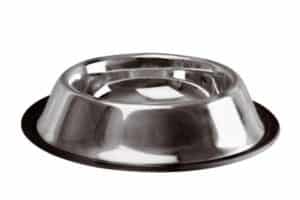
Water bowl size matters
Equipment Essentials for Preventing Scale Rot
Water Bowl Selection
Sturdy, appropriately sized water bowls prevent spillage and unintended increases in environmental humidity levels. The strategic placement and design of water sources helps maintain proper hydration while minimizing substrate contamination. Heavy-based bowls reduce the likelihood of accidental tipping that could create damp conditions conducive to bacterial growth.
Ventilation Systems
Proper air circulation equipment ensures continuous exchange of stale, moisture-laden air with fresh, dry air throughout the enclosure. Adequate ventilation prevents the stagnation of air and reduces the concentration of airborne pathogens. The constant movement of air helps maintain appropriate humidity levels and prevents the formation of microclimates where bacteria thrive.
Temperature Monitoring Devices
Accurate temperature measurement tools enable precise control of environmental conditions throughout the reptile’s habitat. Multiple temperature gauges placed strategically help maintain optimal thermal gradients for species-specific requirements. Consistent temperature monitoring ensures that the environment remains inhospitable to harmful bacteria and fungi.
Humidity Measurement Tools
Reliable hygrometers provide essential data for maintaining appropriate moisture levels in reptile enclosures. Regular humidity monitoring allows for immediate adjustments when conditions deviate from optimal levels. The careful balance of moisture in the environment helps prevent both scale rot and shedding complications.
How to Treat Scale Rot
The treatment of scale rot requires a methodical approach based on the severity of the infection and its progression. Understanding the stages of infection helps determine whether professional veterinary intervention is necessary or if home treatment might suffice. The successful treatment of scale rot depends on both addressing the immediate infection and correcting the environmental conditions that led to its development.

Vet checking reptile for scale rot
How Vets Treat Scale Rot
Severity Assessment
The extent of scale rot infection determines the necessity for professional medical intervention and the appropriate treatment protocol. Moderate to severe cases require veterinary expertise to prevent the infection from entering the bloodstream and causing systemic illness. Professional evaluation ensures proper identification of any underlying conditions that might complicate recovery.
Emergency Indicators
The presence of pus-filled blisters, deep tissue involvement, or systemic symptoms signals the need for immediate veterinary care. These advanced symptoms indicate that the infection has progressed beyond surface-level involvement and requires aggressive treatment. The development of septicemia poses a life-threatening emergency that demands immediate professional medical attention.
Clinical Treatment Protocols
Veterinarians may administer injectable antibiotics, perform surgical debridement of infected tissue, or provide supportive care for compromised animals. Professional treatment often includes a combination of systemic and topical medications to address both surface and deep infection. The veterinary team can also provide specialized wound care and monitoring throughout the healing process.
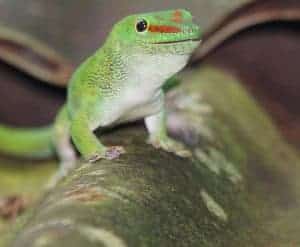
Isolate your lizard
How to Treat Scale Rot at Home
Quarantine Procedures
Isolation of affected reptiles in a clean, controlled environment prevents cross-contamination and allows for focused treatment efforts. The quarantine enclosure should maintain optimal temperature and humidity while providing easy access for regular treatment. Paper towel substrate enables clear visualization of any drainage or bleeding and simplifies daily cleaning requirements.
Betadine Bath Protocol
Daily soaking in a precisely diluted Betadine solution helps eliminate surface bacteria and promotes healing of affected scales. The antimicrobial properties of iodine-based solutions effectively reduce bacterial populations without harming healthy tissue. The warm water temperature during treatment helps improve blood circulation to affected areas while maintaining the reptile’s body temperature.
Antimicrobial Application
Regular application of appropriate antibiotic treatments directly combats bacterial infection and supports the healing process. Topical medications must be carefully selected to avoid ingredients that might cause additional irritation or pain. The consistent application schedule maintains therapeutic levels of medication at the infection site throughout the treatment period.
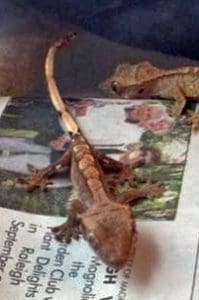
Sterilize their environment
Environment Sterilization
Complete sanitization of the reptile’s primary enclosure eliminates reservoirs of infection-causing bacteria and fungi. The thorough cleaning process includes removing all porous materials and disinfecting all surfaces with appropriate sanitizing solutions. The sterilization protocol prevents reinfection when the animal returns to its permanent enclosure.
Your reptile depends on you to maintain their health and catch potential problems before they become serious. Scale rot might seem daunting, but with proper knowledge and quick action, you can effectively prevent and treat this common condition. Remember, the key to success lies in daily observation and maintaining proper environmental conditions.
Want to learn more about keeping your scaly friend healthy and happy? Banixx offers a wealth of expert resources onreptile care, from habitat setup to nutrition guidelines. Check out our other articles to ensure you’re providing the best possible care for your unique pet. Your reptile’s health journey doesn’t end here – letBanixxbe your trusted guide every scale of the way.
Sources
https://dr.lib.iastate.edu/server/api/core/bitstreams/4e726c78-a31b-4a02-a4a6-7287d88ce0f6/content
https://ras.research.cornell.edu/care/documents/OHS/zoonosis_information_sheet_reptiles.pdf
https://www.petco.com/content/content-hub/home/articlePages/health-wellness/reptile-scale-rot.html#:~:text=One%20affliction%20that%20pet%20parents,infection%2Finflammation)%20in%20reptiles
https://vetmedx.co.za/identifying-and-treating-scale-rot/
https://www.exoticvets.co.za/types-of-common-illnesses-treated/scale-shell-rot-in-reptiles



